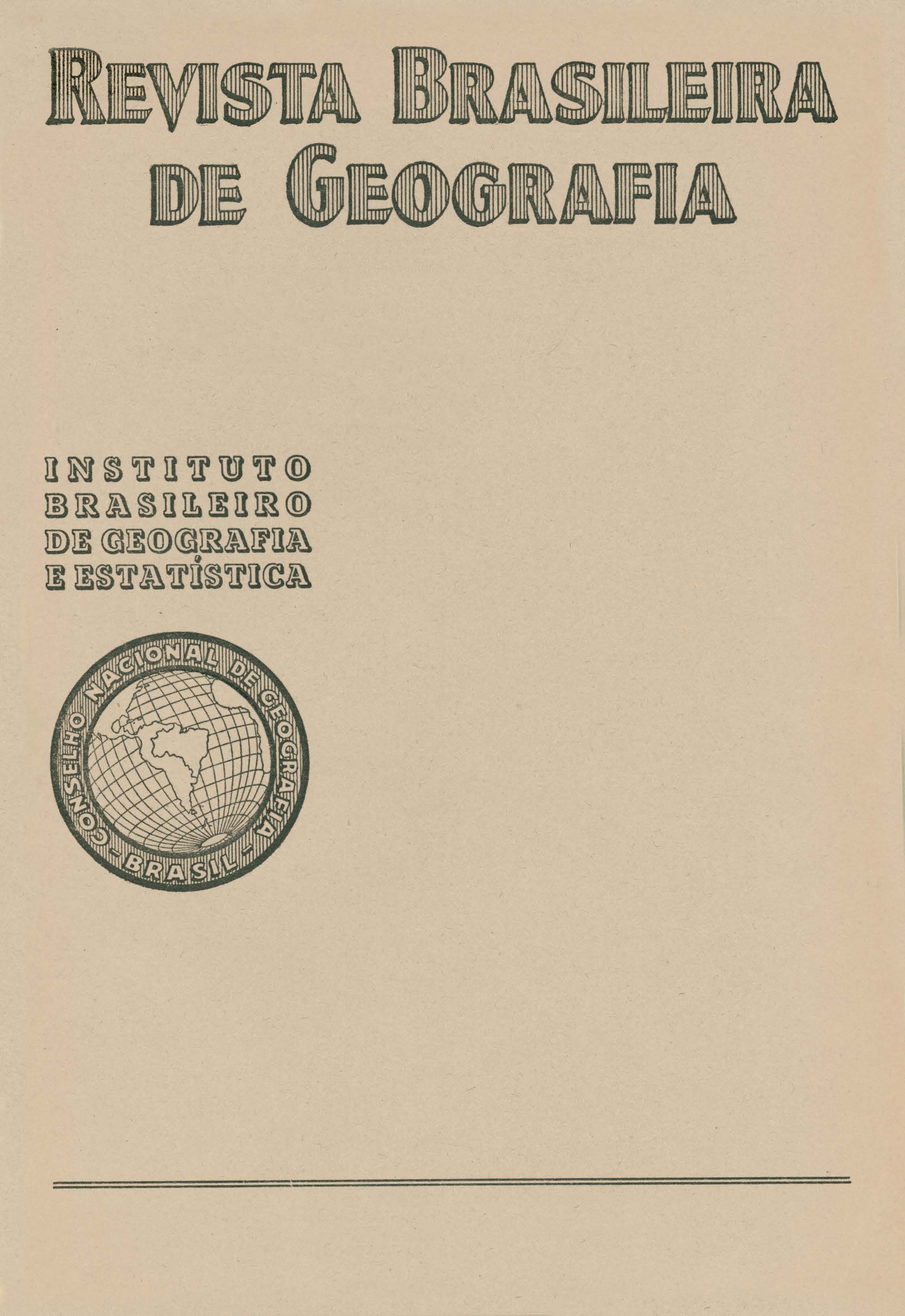Expansão do povoamento do Estado do Paraná
Palavras-chave:
Paraná, Geografia da População, ColonizaçãoResumo
In the first part of this paper, the author explains the process used to obtain a map which represents the expansion of the peopling in the state of Paraná; this map shows lines which mark, for each date, the limit between the already occupied areas and the ones not yet completely peopled. Besides the actual knowledge of the situation obtained through personal observation, ancient maps, and bibliography, other elements were used in the elaboration of the map.
Studying the geographical conditions of the peopling of the State, the author analyses, initially, the historical antecedents. The origin of the first settlers, attracted by prospecting, is also studied; the installment of cattle - raising on the Curitiba plateau, the expansion of this activity to the Campos Gerais and the occupation of the third plateau.
In the XIXth century the occupation was limited to the areas where grasslands occur. only about one fifth of the total area of the state was occupied until then.
The limit of the penetration which almost coincided with the western border of the grasslands, started to move westwards at about 1860. During the second half of the XIXth. century, new factors would change the trend noted in the economy of the state, influencing distincts areas: on one side, immigration would be made in a large scale, and on the other the agricultural activity which was spreading on the west of S. Paulo would attain the border of the State.
The commercial valorization of mate was also an important factor which influenced the penetration of the Paraná pine (araucaria) forest.
The expansion of peopling in these forested zones was not made in a uniform rhythm. When analyzing the peopling and its characteristics, three zones must be distinguished: the north, the west and the center.
From the standpoint of the physical landscape these zones differ in their soils, climate and vegetation.
The peopling of the central part of the State initiated with colonization with Europeans immigrants. In this zone, inspite its being more or less settled already, the Europeans had some difficulties with the virgin forest.
These difficulties were increased, from the last part of the XIXth century on, because the Europeans settled in isolated nuclei scattered in the forest.
The extracting of mate, then highly evaluated, guaranteed the fixation of many of these colonists as it was the sole exportable product due to the difficulty of transport, large distances, etc.
The southern part of the forested region was thus peopled, including the valleys of the Iguaçu and Negro rivers.
A railroad and the exploitation of lumber also played an important role In the peopling
of the zone between Teixeira Soares and União da Vitória, one of the most important lumber
centers in Paraná.
The central zone between the Ivaí and Tibagi rivers was not entirely colonized by Europeans. Until recently, large-estates and vacant land predominated in this zone; intruders occupied this vacant land, a constituted a spontaneous peopling without any order. In the west, the roads that connect Ponta Grossa to Guarapuava - Foz do Iguaçu, União da Vitória to Palmas, Clevelândia and Pato Branco were an important factor in the peopling of this zone. From Guarapuava to Foz do Iguaçu (military colony founded in the XIXth century) – communications were very difficult and only when the telegraphic line was constructed in 1906 some villages were formed.
Along the Paraná river the colonization failed and the peopling stagnated and was concentrated in few little fluvial ports even though the exploitation of mate in the region.
The peopling also advanced along the trail from Guarapuava to Pitanga and Campo Mourão. From these on the peopling advanced to the plateau, to the valleys of the Ivaí and Iguaçu.
In some rare cases the colonists were granted a lot and the property guaranteed after a number of years. A vast assault to the vacant lands took place.
From 1920 on the peopling along the Ivaí and Piquiri rivers started to have an enormous increment, first spontaneously and then in a colony founded by the State in 1939.
Two pioneers fringes can te recognized now in the west: the first, in the region around Campo Mourão, the second in the forests to the west of Palmas - were Pato Branco is the largest center - and to where many colonists from Santa Catarina - especially from Rio Grande do Sul - were attracted.
The occupation of northern Paraná resulted of the expansion of peopling in the neighboring state of S. Paulo.
During the decade of 1860 the first settlements were established along the left margin of the Itararé river. Between the Itararé and the Cinzas river a numerous population settled and several urban nuclei appeared. These nuclei benefited later from the railroad.
The occupation of the third plateau was initiated in the XXth century with the establishment of Jacarézinho and Cambará. The properties dedicated to coffee planting multiplied and new villages and cities were formed.
In 1920 the pioneer fringe was still near the Cinzas, just beyond Cambará.
With the foundation of the Companhia de Terras Norte do Paraná (1929) the advance of the pioneer fringes was rapidly increased.
The peopling was activated, then, in the zone of Bandeirantes and Cornélio Procópio, with the advance of the railroad towards Tibagi. It was to the west of this river, on the land owned bu the Cia. de Terras Norte do Paraná that the occupation was rapidly done, with an extraordinary intensity, using the divide Ivaí-Paranapanema as an axis. Beyond the land owned by the company the peopling advanced towards north almost to the margin of the Paranapanema, and towards west in the direction of the confluence of that river with the Paraná.
The peopling is also spreading along the road which connects Maringá to Campo Mourão; it is in this zone that the contact between the North and West is done.






